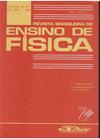Chua’s oscillator: an introductory approach to chaos theory
Q4 Social Sciences
引用次数: 1
Abstract
The purpose of this article is to build an introductory approach to chaos theory from the Chua’ oscillator for students of mathematics, physics and engineering. The Chua’ circuit is one of the simplest dynamic systems that produce irregular behavior. Despite its simplicity, this oscillating circuit is a very useful device for studying basic principles of chaos theory. This study begins with the definition of equilibrium points, this is done in a graphic and analytical way. The analysis of the stationary solution of differential equations system allows to show the occurrence of pitchfork bifurcation. The eigenvalues are calculated and the trajectories of the Chua’ oscillator are analyzed, then the occurrence of Hopf bifurcation is demonstrated. Period-doubling cascade are observed using phase portrait and orbit diagram. Finally, sensitivity to initial conditions is studied by calculating Lyapunov exponents.蔡氏振荡器:混沌理论的入门方法
本文的目的是为数学、物理和工程专业的学生建立一个从蔡氏振子到混沌理论的入门方法。蔡氏电路是产生不规则行为的最简单的动态系统之一。尽管它很简单,但这种振荡电路是研究混沌理论基本原理的一个非常有用的装置。本研究从平衡点的定义开始,以图解和分析的方式完成。微分方程组的平稳解的分析可以显示干草叉分叉的发生。计算了特征值,分析了蔡子的运动轨迹,证明了Hopf分岔的存在。用相位图和轨道图观察倍周期级联。最后,通过计算李雅普诺夫指数研究了对初始条件的敏感性。
本文章由计算机程序翻译,如有差异,请以英文原文为准。
求助全文
约1分钟内获得全文
求助全文
来源期刊
CiteScore
0.50
自引率
0.00%
发文量
102
审稿时长
6-12 weeks
期刊介绍:
The Revista Brasileira de Ensino de Física - RBEF - is an open-access journal of the Brazilian Physical Society (SBF) devoted to the improvement of Physics teaching at all academic levels. Through the publication of peer-reviewed, high-quality papers, we aim at promoting Physics and correlated sciences, thus contributing to the scientific education of society. The RBEF accepts papers on theoretical and experimental aspects of Physics, materials and methodology, history and philosophy of sciences, education policies and themes relevant to the physics-teaching and research community.

 求助内容:
求助内容: 应助结果提醒方式:
应助结果提醒方式:


